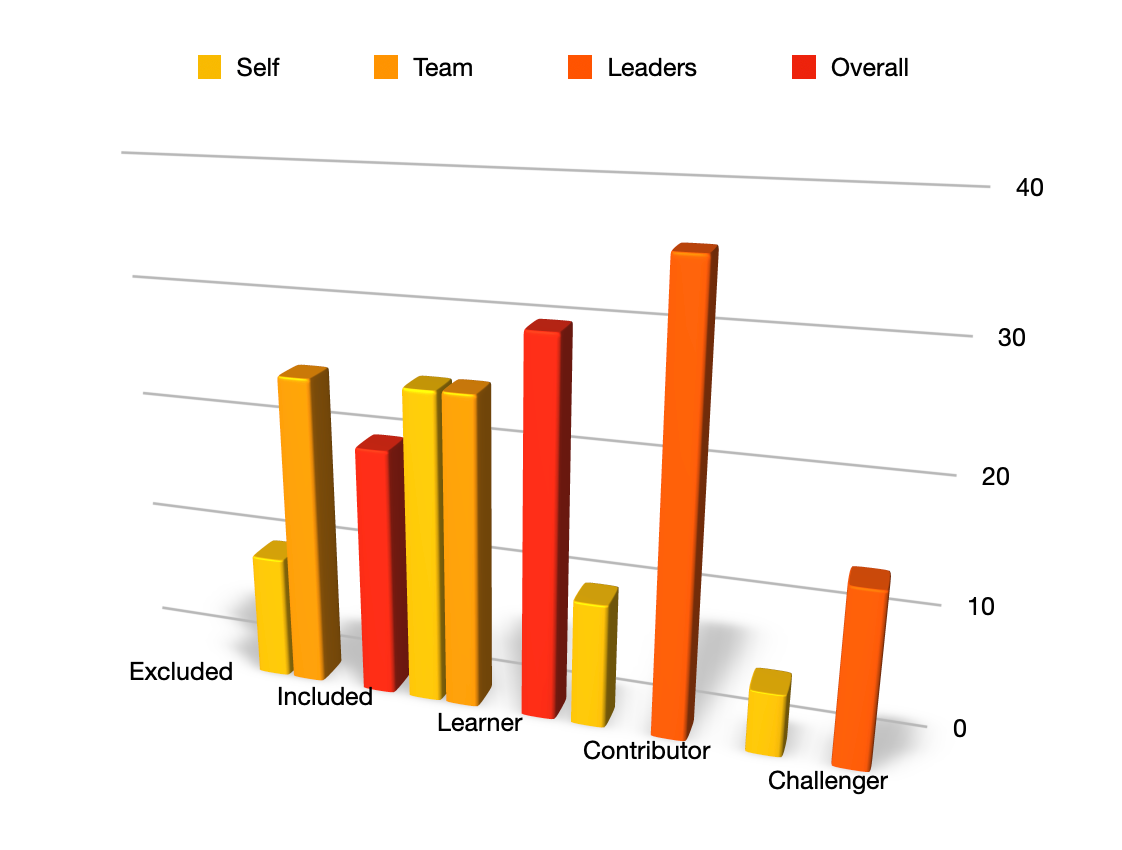Engaged team members improve productivity and innovation
Increasing Engagement
Increasing Psychological Safety
Understanding the psychological safety of a team is essential for innovation. Unsafe teams can't speak up when problems arise and can't voice new ideas. This process can include:
- anonymous surveys
- leadership coaching
- meeting observations
- templates for leaders to do their own observations
- coaching and strategy planning
Coalescing Remote Teams
Remote and hybrid team management is a whole other challenge, beyond management training overall. This coaching can include strategies around:
- meeting formats and guidelines
- channel structures and communication outside meetings
- observations of channels and meetings
- strategy planning
- tools or techniques to increase remote sense of connection
PSYCHOLOGICAL SAFETY CAN HURT ALL YOUR METRICS
Leaders were sure everyone was psychologically safe. Team members told a very different story.
At a large engineering company, we asked about psychological safety anonymously across teams that had very high, very expensive attrition rates. The leadership team was sure they were 'very safe.' 'Our doors are always open' they said.
The team members, however, reported that they didn't even have 'learner' level safety. That meant they weren't safe to ask questions, admit they didn't know things, or admit mistakes. No wonder they were leaving.
Learner level safety isn't just about psychology when you're building equipment. It's not a 'nice to have.' It's about the safety and reliability of the products you're sending out the door. Not having learner level safety endangers every metric in your organization. But if you can't measure it, you can't fix it.
Knowing they had a psychological safety problem gave the leaders a path to fixing a deeply fundamental organizational risk.


